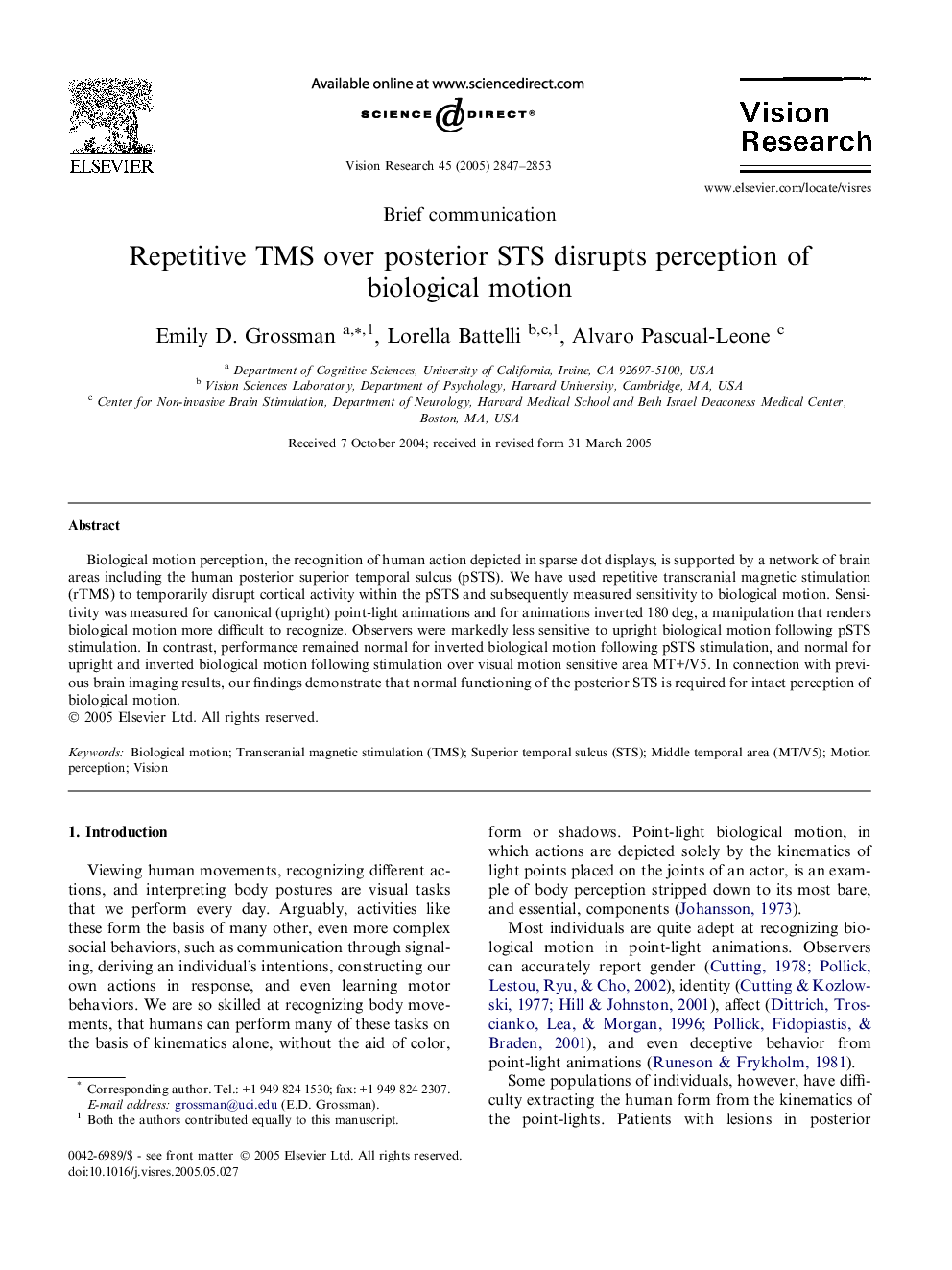| Article ID | Journal | Published Year | Pages | File Type |
|---|---|---|---|---|
| 4036091 | Vision Research | 2005 | 7 Pages |
Biological motion perception, the recognition of human action depicted in sparse dot displays, is supported by a network of brain areas including the human posterior superior temporal sulcus (pSTS). We have used repetitive transcranial magnetic stimulation (rTMS) to temporarily disrupt cortical activity within the pSTS and subsequently measured sensitivity to biological motion. Sensitivity was measured for canonical (upright) point-light animations and for animations inverted 180 deg, a manipulation that renders biological motion more difficult to recognize. Observers were markedly less sensitive to upright biological motion following pSTS stimulation. In contrast, performance remained normal for inverted biological motion following pSTS stimulation, and normal for upright and inverted biological motion following stimulation over visual motion sensitive area MT+/V5. In connection with previous brain imaging results, our findings demonstrate that normal functioning of the posterior STS is required for intact perception of biological motion.
